Michigan Street Had a Mob Riot
And a dispute involving the streetcar, which ultimately won the day.
Michigan Street was named by Solomon Juneau and Morgan L. Martin in 1837 as part of the Great Lakes-themed Third Ward streets. Others in this scheme were Huron (now Clybourn), Detroit (now St. Paul), Buffalo, and Chicago Streets. Michigan means “great or big lake” in Algonquin Indian languages.
Its counterpart, on the west side of the Milwaukee River, was called Sycamore Street in 1835 by Byron Kilbourn and his associates. Sycamore was part of the nature-themed streets in Kilbourntown including Spring (Wisconsin), Prairie (Highland), Cedar (Kilbourn), Walnut, and Cherry.
There were six riots in Milwaukee between 1850 and 1861. The “Bank Riot” was the fifth of these mob actions. It took place on Michigan Street between N. Water Street and N. Broadway on June 24, 1861, during the opening months of the Civil War.
The riot was precipitated when an association of state banks voted to no longer recognize the script used for currency by some of its member banks. Several hundred German workers, fearing their money would be worthless, met at N. 9th and W. Winnebago Streets that morning. They marched to the banking center on N. Water and E. Michigan Streets, demanding that their currency retain its value.
Hundreds of spectators added to the noise and chaos as the mob demonstrated in front of the Fire and Marine Bank, which was headed by Alexander Mitchell. When Mitchell came out of his bank to address the crowd he was greeted by jeers. He was forced back into the building when someone threw a paving stone that just missed hitting him.
Then the demonstrators became an out-of-control mob. They attacked the bank, broke open the locked doors, and destroyed whatever they could. Bank employees and customers were harassed, but escaped without injury. The interior was stripped of its furnishings, which were piled in the street and burned. The State Bank, on the northeast corner of N. Water and E. Michigan Street, was the next to receive the mob’s wrath and it suffered the same fate as Mitchell’s bank. So did other offices in the building. Their furnishings increased the size of the bonfire. (The State Bank building still stands and is now the headquarters of the Grand Avenue Club).
The police force of 18 men was inadequate to quell the rioters. Two militia companies were in the city at the time. The Montgomery Guards, a Milwaukee Irish militia, were called to restore order. But because the company was being sent for training in Madison, there were only 37 members available at the time. They were sent to stop the rioters but without ammunition or bayonets. The rioters backed up as the Guards approached but their small numbers and lack of offense soon became apparent to the mob, who began pelting the soldiers with anything they could throw. The company was ordered to retreat while the mob continued their destruction unabated.
When the rioters started a fire to burn the State Bank building, the fire department was called out. They set up their fire engine and aimed their water first at the fire and then at the demonstrators. The rioters scattered when another company, the Zouaves, was called in and charged the mob with bayonets flashing. Later reinforcements of several more militia companies stationed at training camps in Milwaukee brought calm to the city.
In the late 1880s, a streetcar controversy was in the news. The plan called for a streetcar line between two railroad stations. The new Union Depot had recently been constructed south of what is now Zeidler Union Square between N. 3rd and N. 4th Streets and there was hope it would be linked with the Chicago and Northwestern Depot at the lake between Michigan and Wisconsin Streets. The line would also connect to a water transportation company at Michigan Street and the river.
The problem was that there was no bridge over the river between Michigan and Sycamore Streets. The bridge was opposed by several aldermen who complained the money should be spent in their wards. Proponents said the bridge and streetcar line would spur business development, improve transportation, and increase property values. Opponents temporarily slowed the construction by taking the matter to court but the bridge opened in 1891. The streetcar line followed soon after. As expected, new buildings, businesses, and housing developed along the street but, due to the Financial Panic of 1893, not as quickly as hoped.
Sycamore Street was renamed Michigan Street in 1926 when the city policy to limit each street to only one name was instituted. Today, the downtown portion of Michigan Street extends from Harbor Drive west to N. 10th Street. It resumes as a residential street in segments between N. 20th and N. 39th Streets, N. 55th and N. 60th Streets, and then between N. 91st and N. 93rd Streets.
Carl Baehr, a Milwaukee native, is the author of Milwaukee Streets: the Stories Behind their Names, and articles on local history topics. He has done extensive research on the sinking of the steamship Lady Elgin, the Newhall House Fire, and the Third Ward Fire for his upcoming book, “Dreams and Disasters: A History of the Irish in Milwaukee.” Baehr, a professional genealogist and historical researcher, gives talks on these subjects and on researching Catholic sacramental records. He earned an MLIS from the UW-Milwaukee School of Information Studies.
Along Michigan Street
City Streets
-
Revised Milwaukee Streets Book Dishes the Dirt
 Nov 3rd, 2025 by Michael Horne
Nov 3rd, 2025 by Michael Horne
-
The Curious History of Cathedral Square
 Sep 7th, 2021 by Carl Baehr
Sep 7th, 2021 by Carl Baehr
-
Gordon Place is Rich with Milwaukee History
 May 25th, 2021 by Carl Baehr
May 25th, 2021 by Carl Baehr


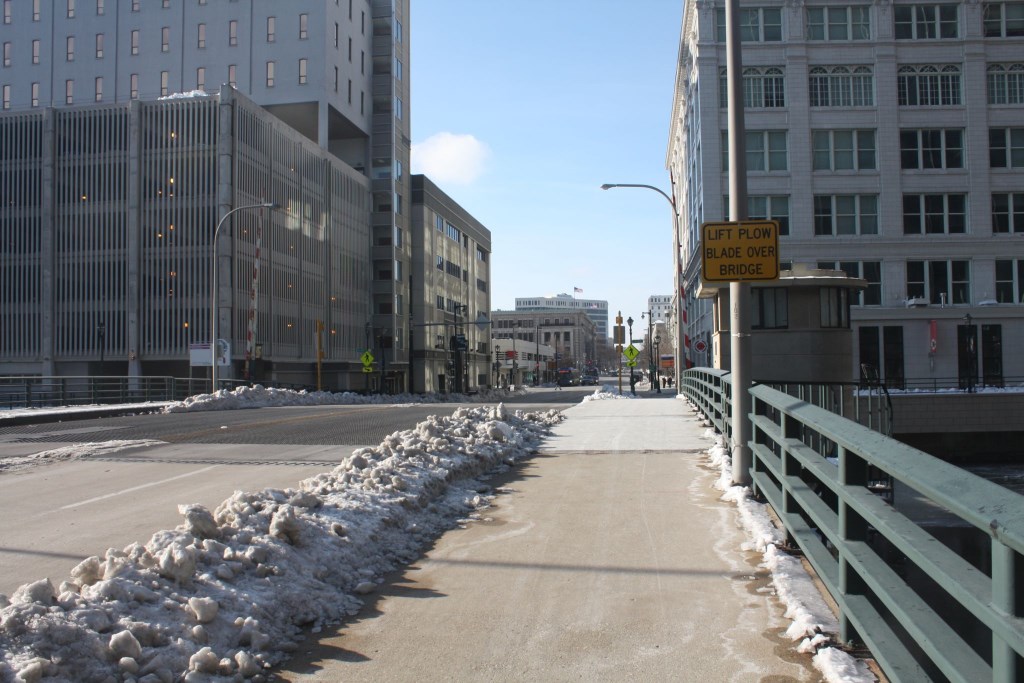

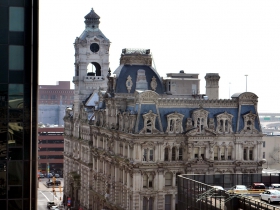
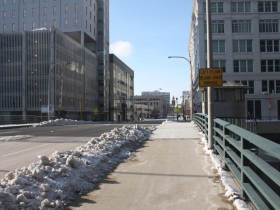
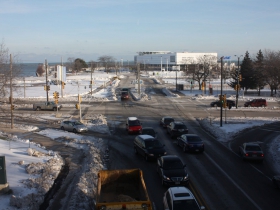
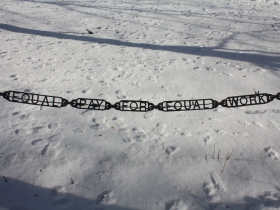
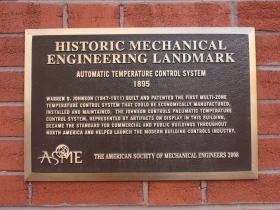
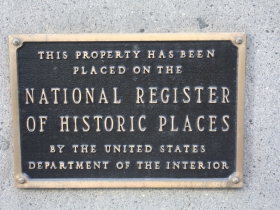


















I really never heard this fascinating story about this incident. I am really enjoying your articles.
We never learn, do we.
“Proponents said the bridge and streetcar line would spur business development, improve transportation, and increase property values. Opponents temporarily slowed the construction by taking the matter to court but the bridge opened in 1891. The streetcar line followed soon after. As expected, new buildings, businesses, and housing developed along the street”